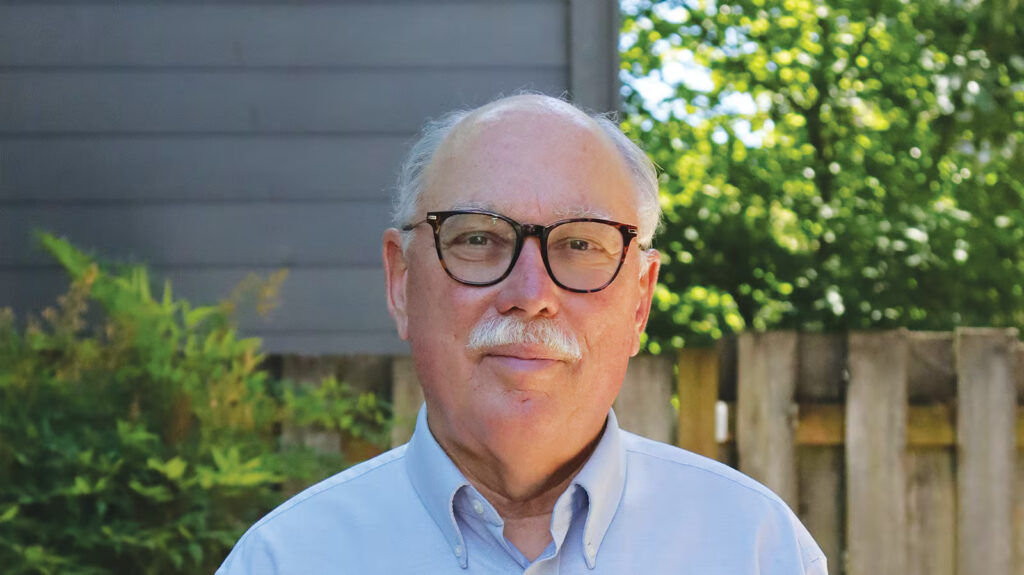
As the Legislature prepares for an Aug. 29 special session to bail out the Oregon Department of Transportation, Oregon economist Joe Cortright says the state agency is misleading lawmakers and the public about its budget.
Cortright, 71, has pored over ODOT budget and planning documents for years with the practiced eye of a veteran number-cruncher. From 1983 to 1995, he staffed the Oregon Legislature’s Trade and Economic Development Committee.
Since leaving Salem, Cortright has run an economic consulting practice. He is also a leader of the environmental group No More Freeways, writes about economic issues for the nonprofit City Observatory website, and serves as chair of the Governor’s Council of Economic Advisors.
In recent months, Cortright has been scrutinizing ODOT’s budget, which was $6.9 billion for the 2023–25 cycle. The agency’s money comes from state and federal fuel taxes, taxes on heavy trucks, and various fees.
He’s long truth-tested the agency’s claims. Cortright and his allies have challenged the budgets for two versions of a replacement bridge across the Columbia River to Vancouver. He has also led opposition to the proposed expansion of Interstate 5 at the Rose Quarter in Portland, arguing that most new highway capacity is both contrary to the state’s carbon-reduction goals and unlikely to reduce congestion.
His contention, in the past and now: Rather than a revenue shortage, ODOT’s real problem is overspending on big projects.
“They are the kitchen remodeler from hell,” Cortright said in a wide-ranging conversation about the agency’s finances.
This interview was condensed and lightly edited for clarity.
OJP: A lot of state agencies could use some outside scrutiny. Why have you focused so much on ODOT?
Joe Cortright: A lot of things that we’re trying to achieve in Oregon—livability, economic development, dealing with climate—revolve around investments we make or don’t make in the transportation system. And I think we are spending money on the wrong things and we’re not spending money on the right things. ODOT in particular.
The Legislature’s single largest priority in the 2025 session was to pass the transportation funding package. Why do you think the bill failed? And what was your reaction to that failure?
I think it failed because the sponsors, including legislative leadership, waited until the very last minute to try and run something through. If you’re doing something big like this, you do not put that off to the last possible minute, unless you think it’s not going to withstand scrutiny.
As for my reaction, I’m hopeful that it creates an opportunity for us to talk more seriously and broadly about what our priorities are in terms of transportation.
You’ve been critical of ODOT’s plans to replace or rebuild three bridges: the Interstate 5 bridge to Vancouver, the Center Street Bridge in Salem, and the Abernethy Bridge between Oregon City and West Linn. ODOT has sold those projects on the basis that they’re old and in need of serious upgrades. Do you disagree?
So, yeah, a couple of things. The Interstate Bridge project—a lot of people would agree it’s really old and it probably makes sense to replace it. That begs the question of: We have hundreds of bridges in the state. Some of them are structurally deficient in ways that the Interstate Bridge isn’t. It’s just we’re worried about what might happen in an earthquake.
Seismic has become this decade’s asbestos. By that, I mean it’s a convenient excuse to spend a lot of money doing a much bigger project than maybe you need to do. I’m not a seismologist or a structural engineer, but I’ll just point to Vancouver, B.C., which arguably is more vulnerable than we are to these earthquakes. And the approach that they have taken to old bridges is not to tear them down and rebuild them, but simply to pound more pilings in around the pilings so that you don’t get the vertical or the horizontal displacement when you get shaking. So there are other solutions that people in the same situation are using to address the seismic issue.
Are there projects of much higher priority to address than ODOT recognizes?
Preservation and maintenance of the existing highway system and basic operations like snowplowing and line painting, for starters.
After the session ended this year, the governor and ODOT immediately announced they’re going to lay off about 500 people, mostly from maintenance and operations. Your reaction to that?
They’re taking hostages, right? “Well, if we don’t have enough for our budget, we’re gooing to cut the vital activities that you encounter on a day-to-day basis.” And at the same time, with the Rose Quarter project in Portland, a $2.1 billion project that just lost $450 million in federal money, they say, “Oh, we’re going to go ahead with that.” If you got laid off from your job, would you go out and buy a new $85,000 pickup and starve your kids?
What’s the right response?
ODOT was awarded $450 million from the Biden administration for the Rose Quarter project, and Boston got the second- or third-largest grant, for a freeway-widening project, 300-some million dollars. Then the Trump budget bill cuts all that, and the reactions couldn’t have been more different. The Massachusetts Department of Transportation says, hey, we just lost $300 million, we need to kind of rethink this project. ODOT says, we’re going to go ahead with this project, even though we’re a billion and a half dollars short.
Two completely different reactions?
Yeah.
In advance of the special session, ODOT has circulated a chart that shows that Oregon collects fewer auto-related tax dollars per capita than other Western states. Is that true?
It’s a very selective definition that was constructed by ODOT. It counts the transportation taxes [rather than spending on transportation]. And the entire difference is, Oregon doesn’t have a sales tax. In California and Washington, if you buy a new car you pay typically 8%, 9% sales tax on that vehicle. But that revenue doesn’t go to the Department of Transportation, it goes to those states’ general funds. There actually is an independent study that says how much different states spend on transportation, by the Brookings Institution, and Oregon is basically right in the middle of the pack for how much we spend.
So if we are spending about the same as other Western states, why is ODOT broke?
ODOT staff advances projects with shoestring funding, wildly optimistic lowball budget forecasts, and generous estimates of where the revenue will come from to pay for the project. And then when they experience cost overruns, they go back to the Transportation Commission and say, gosh, gee, sorry. And the commission gives ’em more money. Everybody at ODOT has seen that happen. The Abernethy Bridge is an example. In 2017, ODOT told the Legislature that a new bridge would cost about $250 million. The Legislature gave ODOT $50 million for the bridge to get it started. Then the bids came in at $500 million and the cost has since gone to $815 million. It’s a management axiom that you get the behavior that you reward.
The Legislature is considering changing the head of transportation to be appointed by the governor as opposed to the commission, which is how it used to be 10 years ago.
It’s rearranging the deck chairs. In 2017, the reform package that the Legislature adopted said, “We’re going to have the commission appoint the director, and that will ensure accountability.” And now we’re doing the exact reverse and claiming it also improves accountability.
This story was produced by the Oregon Journalism Project, a nonprofit investigative newsroom for the state of Oregon. The Prineville Review became a partner of OJP in August of 2025 in order to bring our readers investigative reporting from across Oregon.
Nigel Jaquiss
Jaquiss is the most decorated journalist in Oregon history. A graduate of Dartmouth College and the Columbia School of Journalism, he’s the winner of the 2005 Pulitzer Prize for Investigative Reporting for his work at Willamette Week (the only time in U.S. history this award has been won by a weekly newspaper).






